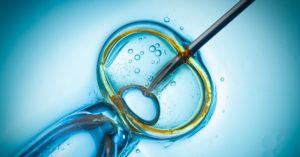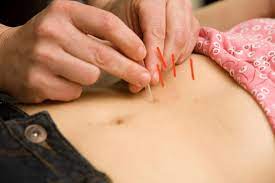On this page, you will find a collection of research papers. I love research! Acupuncture has been shown to increase the odds of pregnancy, even in low responders to IVF drugs, and live birth. I have highlighted the conclusion of each. Each link out to a published research paper.
1. Effects of acupuncture on rates of pregnancy and live birth among women undergoing in vitro fertilization: systematic review and meta-analysis. The authors found that “acupuncture increased the odds of a live birth by 91% compared with the control groups”.(1)
2. Influence of acupuncture on the pregnancy rate in patients who undergo assisted reproduction therapy.
This study involved 160 women divided into 2 groups. They found that 42.5% of women receiving acupuncture became pregnant, while in the IVF-only group, 26.3% of patients conceived(2)
3. Acupuncture on the day of embryo transfer significantly improves the reproductive outcome in infertile women: a prospective, randomized trial. This study demonstrated that the application of acupuncture on the day of Embryo transfer resulted in increases in IVF ongoing pregnancy rates of 39% vs 26% in the non-acupuncture group. (3)

4. Uses of Acupuncture Before and After Embryo Transfer. This report describes outcomes for all patients who attended the London Bridge Fertility, Gynecology, and Genetics Centre in London over a 2-year period and who had acupuncture. In the acupuncture group, positive pregnancy rates/ET were 44.6%, comparing favorably with the non-acupuncture historic control group. When they analyzed outcomes in different age groups they discovered that acupuncture intervention was particularly effective in women in the 35 – 39 and the over 40 group. (4)
5. Acupuncture & IVF poor responders: a cure? This retrospective study found a 40% increase in pregnancy rates in IVF patients using acupuncture. There were no exclusion criteria for the women in this study. Of important interest in this study, patients classified as poor responders (elevated FSH, longer history of infertility, and poor sperm morphology) who received acupuncture demonstrated the same pregnancy rates as normal-prognosis patients. (5)
6. Acupuncture for Poor Ovarian Response. In this randomised control trial, 16 acupuncture treatments prior to egg retrieval significantly increased the number of retrieved mature oocytes in women aged more than 37 years and in those undergoing more than one controlled ovarian hyperstimulation cycle. The negative correlation between the number of retrieved mature oocytes and consecutive controlled ovarian hyperstimulation cycles was not observed in the Ac + IVF group irrespective of maternal age. These findings suggest that physicians can consider acupuncture for the treatment of women with poor ovarian response and aged > 37 years or undergoing multiple IVF cycles. (6)
Comparison of clinical outcomes of patients aged > 37 years in the two study groups.
| Outcome | IVF (n = 10) |
Ac + IVF (n = 8) |
p-value |
|---|---|---|---|
| Number of retrieved mature oocytes | 1.00 ± 0.87 | 2.75 ± 1.91 | p = 0.0300 |
| Number of fertilized oocytes | 0.71 ± 0.76 | 2.25 ± 1.39 | p = 0.0305 |
| Fertilization rate * (No. of zygotes/No. of oocytes) |
87.50 ± 25.00% (8/9) |
91.67 ± 23.57% (18/22) |
p = 0.6271 |
| AMH (ng/mL) Antral follicle count |
0.31 ± 0.27 | 0.55 ± 0.36 | p = 0.3537 |
| 4.86 ± 2.34 | 5.67 ± 1.86 | p = 0.9610 |
Certain acupuncture points such as ST36 and SP6 have been shown to have a beneficial effect that can improve embryo implantation and ongoing maternal tolerance of the developing fetus.
ST36 and SP6 help create a receptive endometrium and placenta. This is done by enhancing VEGF (1) (vascular endothelial growth factor) produced by cells that stimulate the formation of new blood vessels and is part of the system that restores the oxygen supply to tissues when blood circulation is inadequate. (2).
ST36 and SP6 also improve a poor receptive state of the endometrium by promoting endometrial secretion of LIF and LI-12 c cells (3) to improve blastocyst implantation.
ST36 and DU20 can increase TH2 signaling cells (4), benefiting women with a TH1 bias, which can be exacerbated by IVF’s hormonal manipulations. (5) This bias can be a cause of repeated recurrent failed IVF treatment.
ST36 and LI11 activates the P13K pathway (6) which helps growth promotion and cell survival. (7)
GB30 can increase CRH release (8) which improves maternal tolerance and increases blastocyst implantation. A defective uterine CRH/CRH-R1 system during early pregnancy may be implicated in recurrent miscarriage, abnormal placental attachment, and pre-eclampsia. (9)
